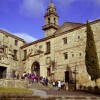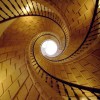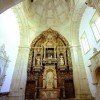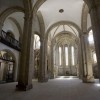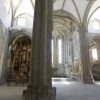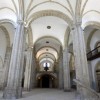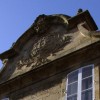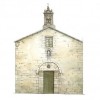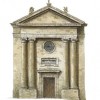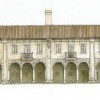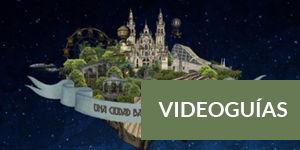- Accede I
- Regístrate I
- carrito
Iglesia y Convento de San Domingos de Bonaval
IGLESIA: S. XIV. Gótico con reminiscencias románicas.
La iglesia fue construida en el siglo XIV siguiendo los cánones de la arquitectura mendicante. Consta de tres naves separadas por arcos de medio punto y una estilizada capilla mayor con altas ventanas y bóveda de crucería. A través del convento se accede a su interior, en el que destacan los cuatro sepulcros góticos situados a ambos lados del altar, las Vírgenes con el Niño del siglo XV y la capilla del Rosario, que contiene retablos barrocos elaborados por Pedro Taboada y Francisco Castro Canseco. Es de gran interés el Panteón de Galicia, situado en una capilla lateral de la iglesia, donde reposan, entre otros, Rosalía de Castro, Castelao, Alfredo Brañas, Ramón Cabanillas y Francisco Asorey. Por este motivo este templo es un lugar asociado a la memoria galleguista. El claustro alberga un interesante crucero gótico. En la actualidad se utiliza como lugar de exposiciones y conciertos.
CONVENTO: S. XIII. Diferentes estilos.
Fundado según la tradición en 1220 por Santo Domingo de Guzmán, el edificio actual data del siglo XIV en sus partes más antiguas, con reformas y ampliaciones realizadas en el siglo XVII por Domingo de Andrade, que deja su huella barroca en el convento. En 1912 fue declarado Monumento Nacional. Sus dependencias albergan el Museo do Pobo Galego, en donde se conserva la memoria etnográfica de Galicia. A las distintas salas -dedicadas al mar, la agricultura, los oficios artesanales o el traje gallego- se accede a través de la sorprendente triple escalera de caracol de Domingo de Andrade, obra emblemática del barroco compostelano. Cada una de sus tres rampas conduce, independientes unas de otras, a cada uno de los pisos del convento.
















